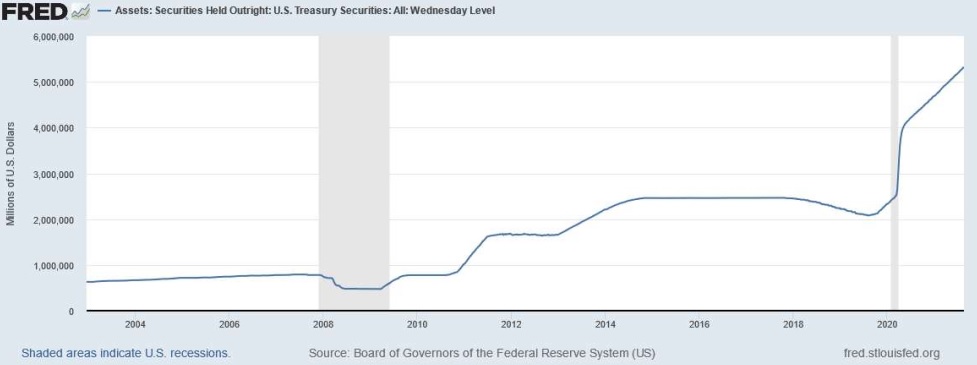Jerome H. Powell is about to give a much-anticipated speech in Jackson Hole on Friday (27th Sept). He is going to talk about the central bank’s inflation framework, the current economic situation, and he is expected to set out the FED’s plans to end the era of quantitative easing. In other words: Mr. Powell is about to pop the everything-bubble.
Without exaggeration we have the highest living standards in human history, and even with the GFC of 2007-2008 we are in the longest period of economic stability. But at what price?
In 1973 the Bretton-Woods system ceased to function (it was formally over in 1976) and central banks started to float their currencies. Currency devaluation became a well-used tool to support employment and improve international competitiveness. Over the course of 45 years central banks protected economies but they also distorted the cost of risk (or even the perception of it) with rate cuts and the abundance of liquidity. It led to an unforeseen build up in leverage, downward distortion in risk pricing,disappearance of risk premium and income disparity. It also led to the largest probabilistic tail risk on both ends of the return distribution curve.
As for the FED, from the Greenspan put to the more-or-less-infinite QE the central bank exercised preemptive strikes to keep the economy afloat and employment to a theoretical maximum. 30+ years of monetary supercycle led to a debt-supercycle, that led to mispricing market risk which resulted in misallocation of funds and introduced moral hazard to trading. It became even more obvious when the FED started its direct financing of government debt after 2020.

Recklessness became the new normal. A generation of traders learnt how to buy the dip, sell every single uptick in volatility, and build up leverage as soon as the central bank holds a press conference. The FED (along with the BOJ, and the ECB) started to react on market developments instead of economic developments as the market itself became the economy. High market valuations survived without significant fundamental growth and that created unprecedented tensions in global markets.
In simple terms: central banks brought future asset returns to the present and pushed tail risks into the future. Risks did not disappear, risks were spread from one market segment to another, from private to institutional, from institutional to public and multi-national.
My original idea for this part was to give a few ideas of what is about to come based on game theory, with perfect information for a variable sum game and cooperative players, but to be completely honest all I got was a bunch of gunslingers standing in a circle pointing at each other and staring – with some harmonica and tumbleweed.
We have a few scenarios outlined in the office, but I swear we have little to no idea which one willmaterialize. All we know for sure is that the FED has the fastest hand and the most bullets: never before had any central bank the opportunity to tackle the everything-bubble problem amid such favorable circumstances. Markets are at all-time highs, real yields are way into negative territory, the economy is recovering, and there is the goal of anchoring inflation expectations that supports every move the FED is about to make.
We do hope Mr. Powell won’t hesitate to act.

